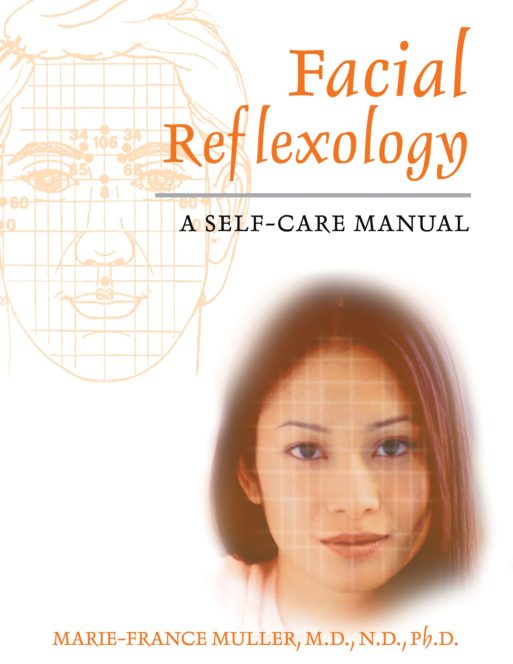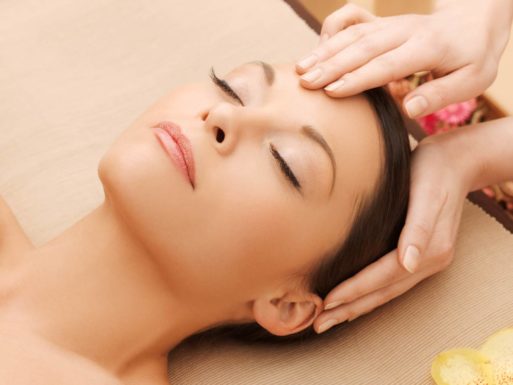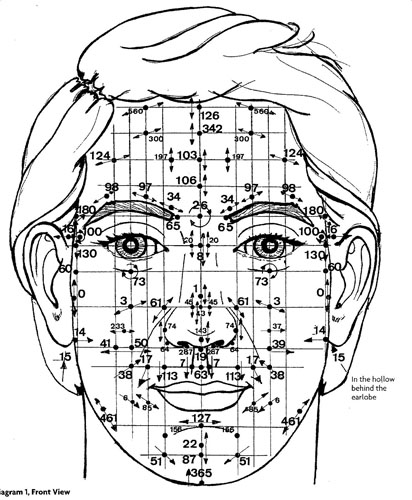 While Western medicine excels at treating the physical body in moderate to extreme states of imbalance, other holistic therapies address the whole human system — mind, body and emotions. They provide keys for wellness, even as the body degenerates and the mind blurs. In the past, SevenPonds has covered therapies such as Jin Shin Jyutsu and integrative massage therapy. Today we share the jewels of Dien’ Cham’, in “Facial Reflexology: A Self-Care Manual” by Marie-France Muller, M.D., N.D., Ph.D.
While Western medicine excels at treating the physical body in moderate to extreme states of imbalance, other holistic therapies address the whole human system — mind, body and emotions. They provide keys for wellness, even as the body degenerates and the mind blurs. In the past, SevenPonds has covered therapies such as Jin Shin Jyutsu and integrative massage therapy. Today we share the jewels of Dien’ Cham’, in “Facial Reflexology: A Self-Care Manual” by Marie-France Muller, M.D., N.D., Ph.D.
Dien’ Cham’ involves applying gentle, consistent pressure to acupressure points on the face that correspond to our organs, nervous system and entire body. “Facial Reflexology” offers the history of this practice, as well as instruction on how to perform Dien’ Cham’ on yourself and others with a minimum of practice and experience. While “Dien’ Cham'” literally means “facial acupuncture,” the practice explained in Muller’s book involves the use of fingers. Alternatively, you may use lightly applied direct pressure from the rounded (non-writing) end of a ballpoint pen. You may also use the writing tip (with ink source removed) for more direct stimulation. It is best applied in a sweeping, rubbing or pressing manner.

A Dien’ Cham’ session
(Credit: amazon.com)
Muller writes in her introduction that she holds three essential points at the center of her Dien’ Cham’ practice:
- Our own bodies and minds are our faithful, loyal friends.
- We can and must have confidence in this.
- Any therapeutic action must support the body’s efforts toward equilibrium, not battle against it.
These are important points to keep in mind when considering how to help yourself and others through periods of transition. You may use Dien’ Cham’ on physically healthy or ailing individuals, including people whose bodies are actively dying. It is also suitable and highly effective for both children and pets. A session may take as little as 30 to 40 seconds to complete.

Complete facial reflexology chart. Treatments for specific ailments involve a handful of the points depicted here.
(Credit: pinterest.com)
The technique has a wide range of applications, many of which are included in Chapter 4: “Using Dien’ Cham’ for Prevention and Treatment of Health Problems.” Don’t be fooled by the book’s title, though. It covers everything from asthma attacks, joint stiffness, nerve and back pain and dry mouth. It also addresses anxiety, drowsiness, insomnia, fainting and migraines.
“Facial Reflexology” includes detailed, yet beginner-friendly, diagrams of the acupressure points to apply for each condition, as well as a short note on when and how to apply it. The diverse applications of Dien’ Cham’ make it a useful gift to bring anyone in your life back into balance. In particular, it gives a context for the affection you may wish to show a loved one who is dying.
When considering to offer Dien’ Cham’ to someone, keep the following points in mind:
- Ask first. Though it may seem obvious, be sure to mention that you will be touching someone’s face, which is a very sensitive and intimate area. Some people may not be comfortable with this at all. They might prefer to apply the treatment to themselves with your verbal guidance or a demonstration on yourself. If the person you will treat is an elderly or ill person with fragile skin, apply gentle pressure and take care not to irritate the skin.
- Be in an environment conducive to relaxation. While these treatments can be quickly and effectively applied almost anywhere and at any time, the optimal environment is one that cultivates a sense of safety and ease.
- Prepare yourself first. Make sure you are in a physically, mentally and emotionally stable place before you apply a treatment on anyone. At the very least, take some long, deep breaths to bring yourself into the present moment. Shake out your hands and wrists, and imagine that you are touching yourself when you touch someone else. Remain warmhearted and aware.
“Facial Reflexology” can be found in many book stores, or easily ordered online.

 ”Facial Reflexology” by Marie-France Muller
”Facial Reflexology” by Marie-France Muller


 Recovering Cremation Remains After the Los Angeles Fires
Recovering Cremation Remains After the Los Angeles Fires
 “As Tears Go By” by Marianne Faithfull
“As Tears Go By” by Marianne Faithfull















